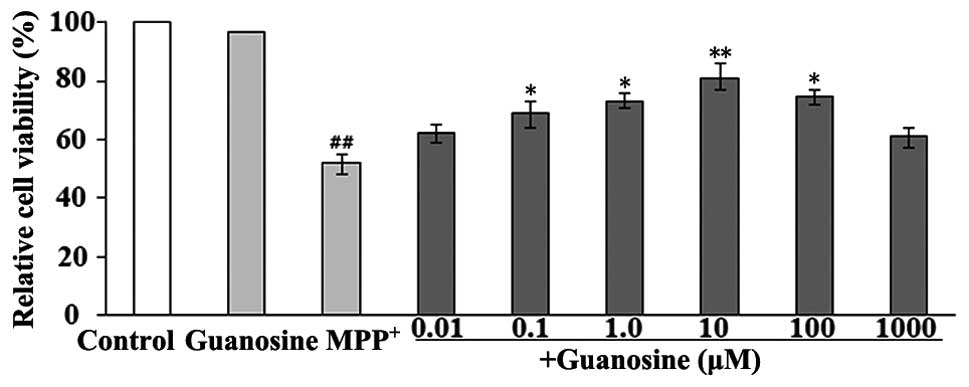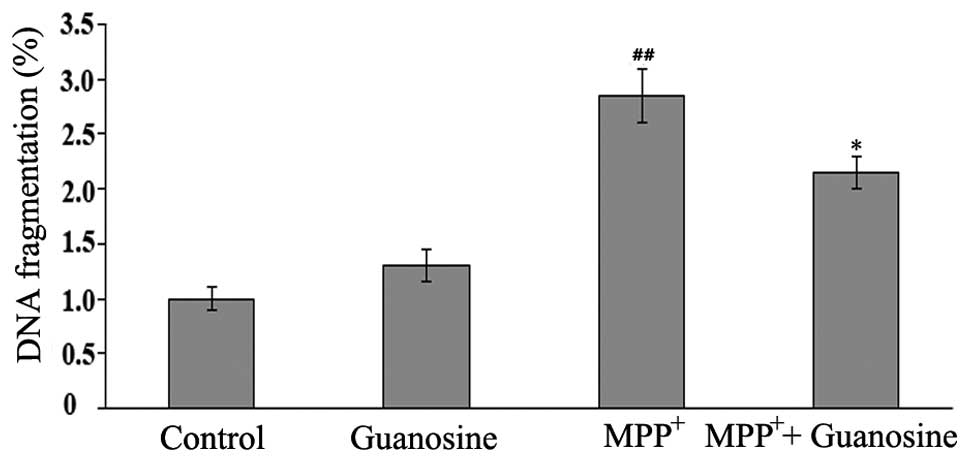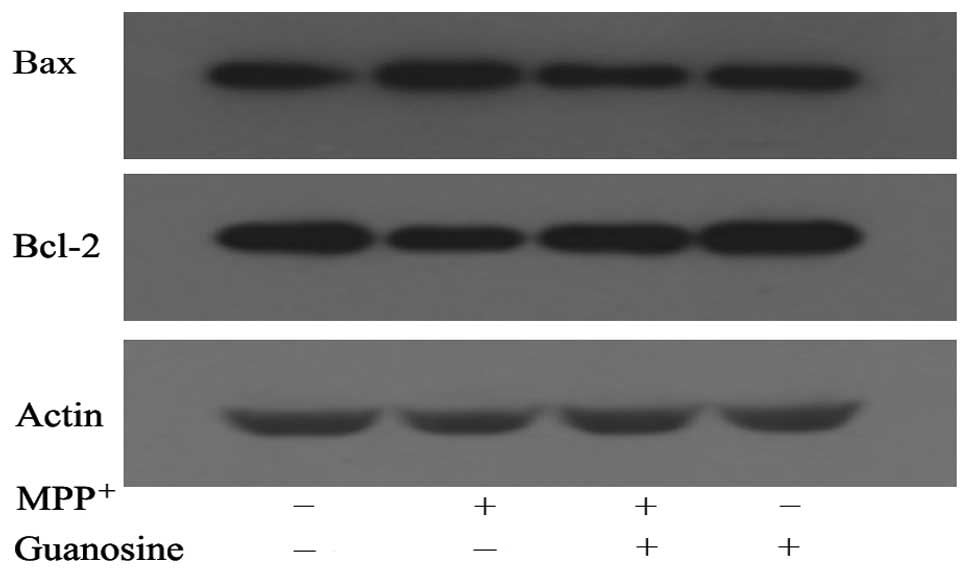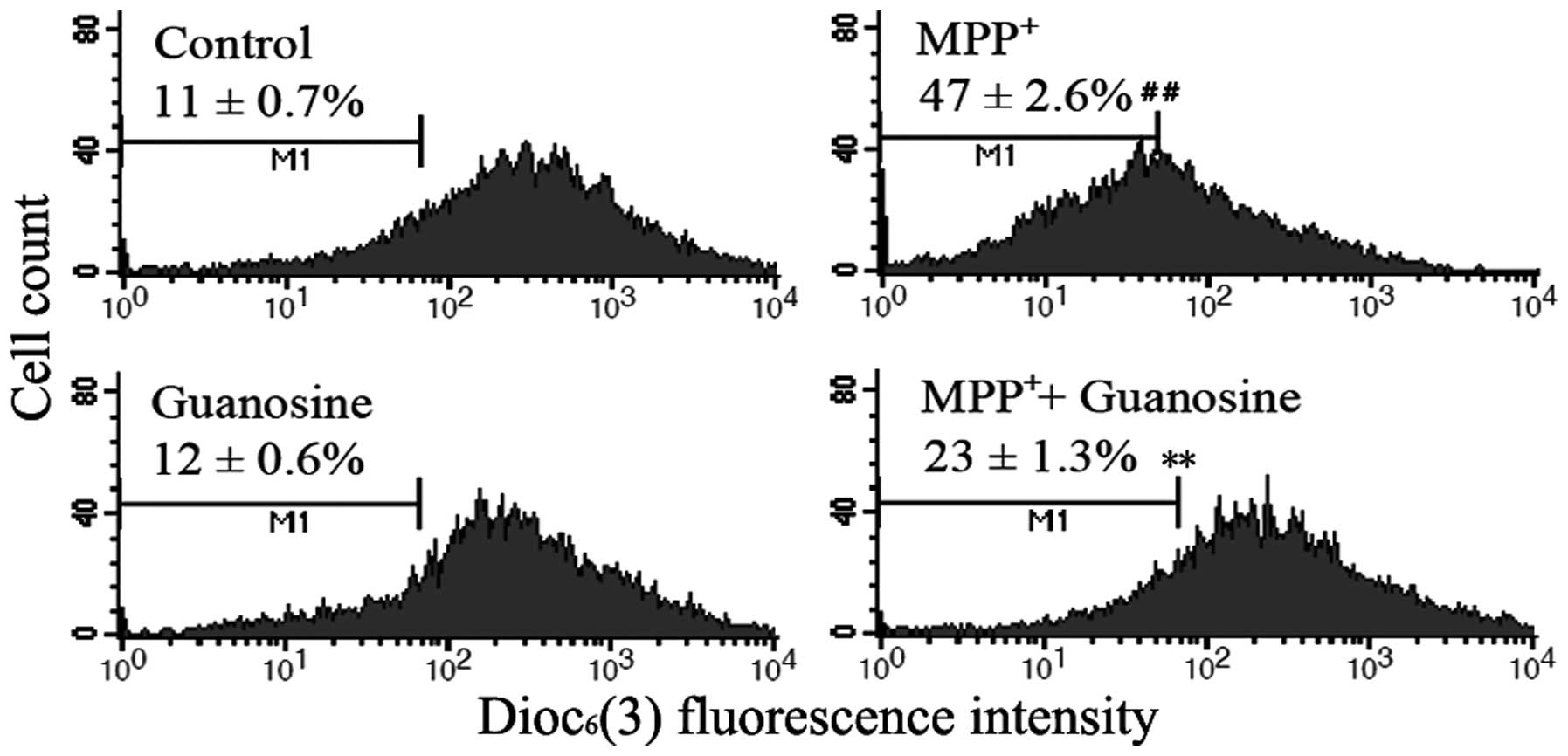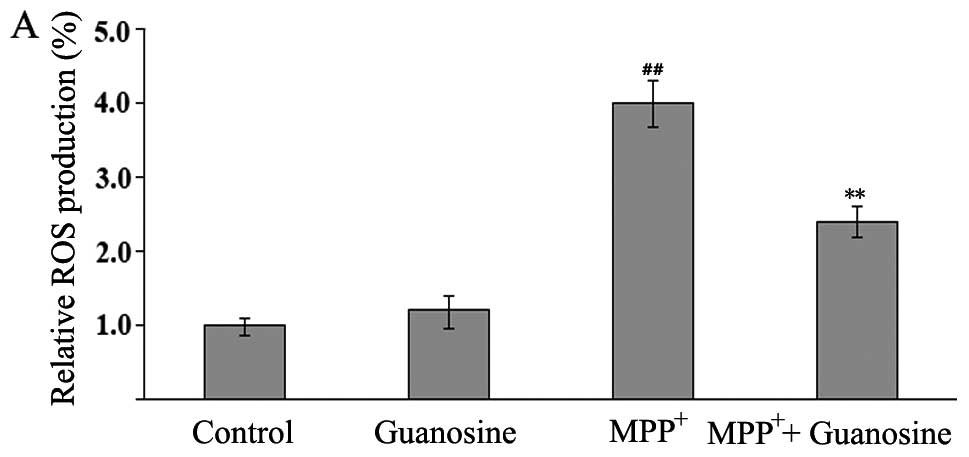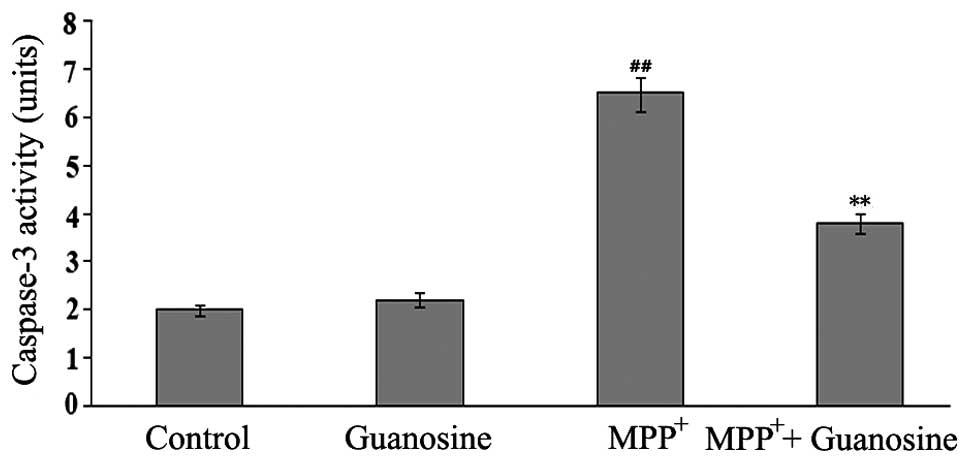|
1
|
Forno LS: Neuropathology of Parkinson’s
disease. J Neuropathol Exp Neurol. 55:259–272. 1996.
|
|
2
|
Abou-Sleiman PM, Muqit MM and Wood NW:
Expanding insights of mitochondrial dysfunction in Parkinson’s
disease. Nat Rev Neurosci. 7:207–219. 2006.
|
|
3
|
McGeer PL and McGeer EG: Glial reactions
in Parkinson’s disease. Mov Disord. 23:474–483. 2008.
|
|
4
|
Olanow CW: The pathogenesis of cell death
in Parkinson’s disease - 2007. Mov Disord. 22(Suppl 17): S335–S342.
2007.
|
|
5
|
Zhou C, Huang Y and Przedborski S:
Oxidative stress in Parkinson’s disease: a mechanism of pathogenic
and therapeutic significance. Ann NY Acad Sci. 1147:93–104.
2008.
|
|
6
|
Li DW, Liu ZQ, Chen W, Yao M and Li GR:
Association of glycogen synthase kinase-3β with Parkinson’s disease
(Review). Mol Med Rep. 9:2043–2050. 2014.
|
|
7
|
Vila M and Przedborski S: Targeting
programmed cell death in neurodegenerative diseases. Nat Rev
Neurosci. 4:365–375. 2003. View
Article : Google Scholar : PubMed/NCBI
|
|
8
|
Perier C, Tieu K, Guégan C, et al: Complex
I deficiency primes Bax-dependent neuronal apoptosis through
mitochondrial oxidative damage. Proc Natl Acad Sci USA.
102:19126–19131. 2005. View Article : Google Scholar : PubMed/NCBI
|
|
9
|
Roucou X and Martinou JC: Conformational
change of Bax: a question of life or death. Cell Death Differ.
8:875–877. 2001. View Article : Google Scholar : PubMed/NCBI
|
|
10
|
Shiba-Fukushima K, Imai Y, Yoshida S, et
al: PINK1-mediated phosphorylation of the Parkin ubiquitin-like
domain primes mitochondrial translocation of Parkin and regulates
mitophagy. Sci Rep. 2:10022012. View Article : Google Scholar : PubMed/NCBI
|
|
11
|
Kopin IJ and Markey SP: MPTP toxicity:
implications for research in Parkinson’s disease. Annu Rev
Neurosci. 11:81–96. 1988.
|
|
12
|
Heikkila RE, Sieber BA, Manzino L and
Sonsalla PK: Some features of the nigrostriatal dopaminergic
neurotoxin 1-methyl-4-phenyl-1,2,3,6-tetrahydropyridine (MPTP) in
the mouse. Mol Chem Neuropathol. 10:171–183. 1989. View Article : Google Scholar : PubMed/NCBI
|
|
13
|
Calon F, Lavertu N, Lemieux AM, et al:
Effect of MPTP-induced denervation on basal ganglia GABA(B)
receptors: correlation with dopamine concentrations and dopamine
transporter. Synapse. 40:225–234. 2001. View Article : Google Scholar : PubMed/NCBI
|
|
14
|
Chiba K, Trevor A and Castagnoli N Jr:
Metabolism of the neurotoxic tertiary amine, MPTP, by brain
monoamine oxidase. Biochem Biophys Res Commun. 120:574–578. 1984.
View Article : Google Scholar : PubMed/NCBI
|
|
15
|
Rathbone MP, Middlemiss PJ, Gysbers JW, et
al: Trophic effects of purines in neurons and glial cells. Prog
Neurobiol. 59:663–690. 1999. View Article : Google Scholar : PubMed/NCBI
|
|
16
|
Dal-Cim T, Martins WC, Santos AR and Tasca
CI: Guanosine is neuroprotective against oxygen/glucose deprivation
in hippocampal slices via large conductance
Ca2+-activated K+ channels,
phosphatidilinositol-3 kinase/protein kinase B pathway activation
and glutamate uptake. Neuroscience. 183:212–220. 2011. View Article : Google Scholar : PubMed/NCBI
|
|
17
|
Chang R, Algird A, Bau C, Rathbone MP and
Jiang S: Neuro-protective effects of guanosine on stroke models in
vitro and in vivo. Neurosci Lett. 431:101–105. 2008. View Article : Google Scholar : PubMed/NCBI
|
|
18
|
Di Iorio P, Ballerini P, Traversa U, et
al: The antiapoptotic effect of guanosine is mediated by the
activation of the PI 3-kinase/AKT/PKB pathway in cultured rat
astrocytes. Glia. 46:356–368. 2004.PubMed/NCBI
|
|
19
|
Pettifer KM, Kleywegt S, Bau CJ, et al:
Guanosine protects SH-SY5Y cells against beta-amyloid-induced
apoptosis. Neuroreport. 15:833–836. 2004. View Article : Google Scholar : PubMed/NCBI
|
|
20
|
Pettifer KM, Jiang S, Bau C, et al:
MPP(+)-induced cytotoxicity in neuroblastoma cells: Antagonism and
reversal by guanosine. Purinergic Signal. 3:399–409. 2007.
View Article : Google Scholar : PubMed/NCBI
|
|
21
|
Li DW, Li GR, Lu Y, et al: α-lipoic acid
protects dopaminergic neurons against MPP+-induced
apoptosis by attenuating reactive oxygen species formation. Int J
Mol Med. 32:108–114. 2013.
|
|
22
|
Yim SB, Park SE and Lee CS: Protective
effect of glycyrrhizin on 1-methyl-4-phenylpyridinium-induced
mitochondrial damage and cell death in differentiated PC12 cells. J
Pharmacol Exp Ther. 321:816–822. 2007. View Article : Google Scholar : PubMed/NCBI
|
|
23
|
Banerjee R, Vitvitsky V and Garg SK: The
undertow of sulfur metabolism on glutamatergic neurotransmission.
Trends Biochem Sci. 33:413–419. 2008. View Article : Google Scholar : PubMed/NCBI
|
|
24
|
Fischer U, Jänicke RU and Schulze-Osthoff
K: Many cuts to ruin: a comprehensive update of caspase substrates.
Cell Death Differ. 10:76–100. 2003. View Article : Google Scholar : PubMed/NCBI
|
|
25
|
de Lau LM and Breteler MM: Epidemiology of
Parkinson’s disease. Lancet Neurol. 5:525–535. 2006.
|
|
26
|
Budd SL and Nicholls DG: Mitochondria in
the life and death of neurons. Essays Biochem. 33:43–52.
1998.PubMed/NCBI
|
|
27
|
Akhtar RS, Ness JM and Roth KA: Bcl-2
family regulation of neuronal development and neurodegeneration.
Biochim Biophys Acta. 1644:189–203. 2004. View Article : Google Scholar : PubMed/NCBI
|
|
28
|
Armstrong JS: Mitochondrial membrane
permeabilization: the sine qua non for cell death. Bioessays.
28:253–260. 2006. View Article : Google Scholar : PubMed/NCBI
|
|
29
|
Martinou JC and Green DR: Breaking the
mitochondrial barrier. Nat Rev Mol Cell Biol. 2:63–67. 2001.
View Article : Google Scholar : PubMed/NCBI
|
|
30
|
Gollapudi S, McCormick MJ and Gupta S:
Changes in mitochondrial membrane potential and mitochondrial mass
occur independent of the activation of caspase-8 and caspase-3
during CD95-mediated apoptosis in peripheral blood T cells. Int J
Oncol. 22:597–600. 2003.PubMed/NCBI
|
|
31
|
Tarozzi A, Merlicco A, Morroni F, et al:
Guanosine protects human neuroblastoma cells from oxidative stress
and toxicity induced by Amyloid-beta peptide oligomers. J Biol
Regul Homeost Agents. 24:297–306. 2010.PubMed/NCBI
|
|
32
|
Molz S, Dal-Cim T, Budni J, et al:
Neuroprotective effect of guanosine against glutamate-induced cell
death in rat hippocampal slices is mediated by the
phosphatidylinositol-3 kinase/Akt/glycogen synthase kinase 3β
pathway activation and inducible nitric oxide synthase inhibition.
J Neurosci Res. 89:1400–1408. 2011.PubMed/NCBI
|
|
33
|
Chuang DM, Chen RW, Chalecka-Franaszek E,
et al: Neuro-protective effects of lithium in cultured cells and
animal models of diseases. Bipolar Disord. 4:129–136. 2002.
View Article : Google Scholar : PubMed/NCBI
|
|
34
|
Chen RW and Chuang DM: Long term lithium
treatment suppresses p53 and Bax expression but increases Bcl-2
expression. A prominent role in neuroprotection against
excitotoxicity. J Biol Chem. 274:6039–6042. 1999. View Article : Google Scholar : PubMed/NCBI
|
|
35
|
Manji HK and Chen G: PKC, MAP kinases and
the bcl-2 family of proteins as long-term targets for mood
stabilizers. Mol Psychiatry. 7(Suppl 1): S46–S56. 2002. View Article : Google Scholar : PubMed/NCBI
|
|
36
|
Chen G, Zeng WZ, Yuan PX, et al: The
mood-stabilizing agents lithium and valproate robustly increase the
levels of the neuroprotective protein bcl-2 in the CNS. J
Neurochem. 72:879–882. 1999. View Article : Google Scholar : PubMed/NCBI
|
|
37
|
Kaga S, Zhan L, Altaf E and Maulik N:
Glycogen synthase kinase-3beta/beta-catenin promotes angiogenic and
anti-apoptotic signaling through the induction of VEGF, Bcl-2 and
survivin expression in rat ischemic preconditioned myocardium. J
Mol Cell Cardiol. 40:138–147. 2006. View Article : Google Scholar
|
|
38
|
Boatright KM and Salvesen GS: Mechanisms
of caspase activation. Curr Opin Cell Biol. 15:725–731. 2003.
View Article : Google Scholar : PubMed/NCBI
|
|
39
|
Kumar S: Caspase function in programmed
cell death. Cell Death Differ. 14:32–43. 2007. View Article : Google Scholar
|
|
40
|
Navarro A, Boveris A, Bandez MJ, et al:
Human brain cortex: mitochondrial oxidative damage and adaptive
response in Parkinson disease and in dementia with Lewy bodies.
Free Radic Biol Med. 46:1574–1580. 2009. View Article : Google Scholar : PubMed/NCBI
|
|
41
|
Cassarino DS, Fall CP, Swerdlow RH, et al:
Elevated reactive oxygen species and antioxidant enzyme activities
in animal and cellular models of Parkinson’s disease. Biochim
Biophys Acta. 1362:77–86. 1997.PubMed/NCBI
|
|
42
|
Wallace DC: A mitochondrial paradigm of
metabolic and degenerative diseases, aging, and cancer: a dawn for
evolutionary medicine. Annu Rev Genet. 39:359–407. 2005. View Article : Google Scholar : PubMed/NCBI
|
|
43
|
Halliwell B: Oxidative stress and
neurodegeneration: where are we now? J Neurochem. 97:1634–1658.
2006. View Article : Google Scholar : PubMed/NCBI
|
|
44
|
Lee M, Cho T, Jantaratnotai N, Wang YT,
McGeer E and McGeer PL: Depletion of GSH in glial cells induces
neurotoxicity: relevance to aging and degenerative neurological
diseases. FASEB J. 24:2533–2545. 2010. View Article : Google Scholar : PubMed/NCBI
|
|
45
|
Hall AG: Review: The role of glutathione
in the regulation of apoptosis. Eur J Clin Invest. 29:238–245.
1999. View Article : Google Scholar : PubMed/NCBI
|















